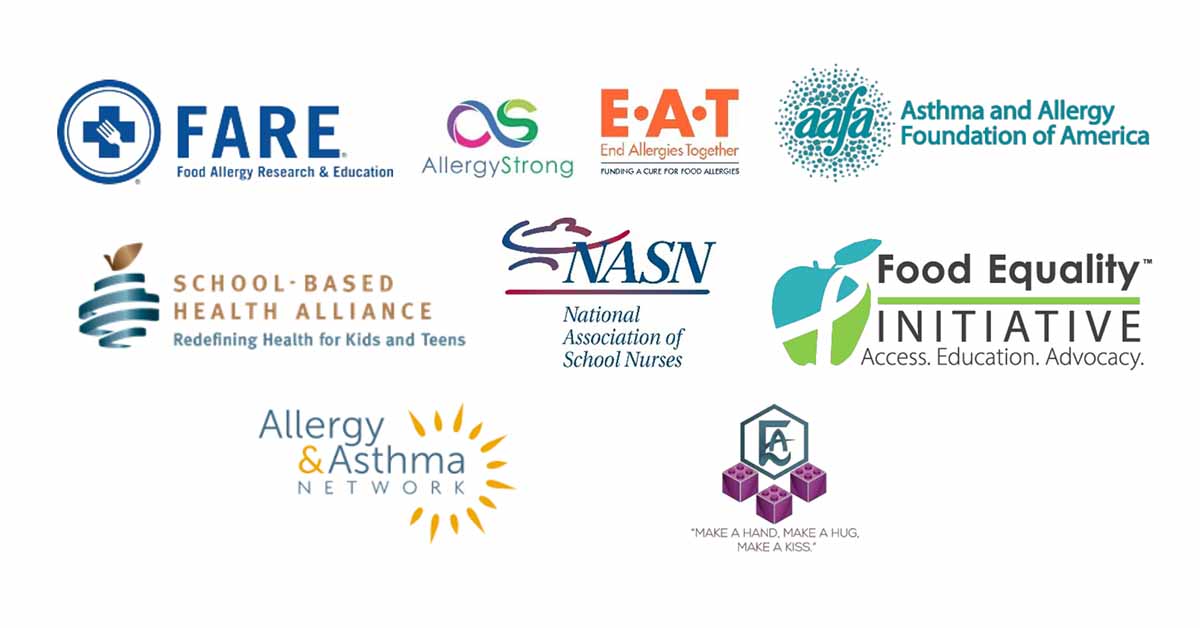Back in April, the New York Times published an article regarding recommendations authored by the Centers for Disease Control (CDC) intended to guide states when they gradually lift their coronavirus restrictions. The draft guidance includes decision trees for seven types of organizations: schools, camps, childcare centers, religious facilities, mass transit systems, workplaces, and bars/restaurants.
One of the CDC’s recommendations is to have children eat their lunches in their classrooms, presumably to aid with social distancing by avoiding crowded cafeterias. However well-intentioned, this could prove a serious contact hazard for children suffering from food allergies which now numbers some 5.6 million kids or an average of two per every classroom.
We at SnackSafely.com believe that food should be barred from all classrooms where the food allergic attend classes, for the very reason that inadvertent contact with common foods such as peanut butter or milk could cause life-threatening reactions for those allergic.
Food Allergy Research and Education’s (FARE) CEO, Lisa Gable puts it this way:
We don’t want to solve one health problem by creating another. For the more than 5.6 million children living with potentially life-threatening food allergies, eating meals in their classroom – even six feet apart – raises cross-contact risks and the likelihood of greater exposure. In order for the CDC, states, and localities to do what is best to protect all our children when they return to the classroom, the current guidance must be updated to include language that accounts for these children.
A number of non-profit food allergy advocacies have issued a joint letter to the CDC urging them to revise their draft guidance before it is published by the federal government:

May 6, 2020
Dr. Robert R. Redfield
Director
Centers for Disease Control and Prevention 1600 Clifton Rd.
Atlanta, GA 30329
Dear Director Redfield,
We, the undersigned, appreciate all that you and your dedicated team are doing during the coronavirus disease 2019 (COVID-19) pandemic to help Americans overcome the greatest health challenge of our lifetimes. We know that these are difficult times and are grateful for CDC’s efforts to protect our citizens from health threats as you guide our nation towards reopening portions of society including the more than 130,000 schools across the country.
Recent media reports indicate that CDC has developed draft guidance for schools that recommend “students eat lunch in their classrooms.” While we recognize that these guidelines are voluntary, and that education is firmly rooted in local control, we ask that the CDC helps local authorities develop the best course of action with parents whose children are affected by life-threatening food allergies. We understand the need for a policy change with respect to how children eat at school to help maximize physical distancing during the pandemic.
Our concern is to ensure the safety of the millions of food allergic children attending school, where food allergens will now be increasingly present in the classroom as a result of the accommodations outlined in the draft guidance. Though such accommodation may be unavoidable, there is concern for the potential for increased risk from cross-contact of allergenic proteins in the classroom, and how to maintain the safety of any food allergic children in that class. As members of the food allergy and school health communities, we would recommend that the new draft guidance include a paragraph that addresses these concerns.
Our recommendation would be that in any classroom where there is a food allergic child, to reinforce strict handwashing with soap and water after food contact, disinfecting of surfaces after food contact is made, and blanket “do not share” food policy. Soap and water are preferable to alcohol-based hand sanitizer as the latter has been proven to not remove allergenic proteins from the hand. Data have shown that unintended reactions related to food exposure at school can occur. However, the aforementioned steps are evidence-based recommendations that can help decrease these risks. These strategies are consistent with those outlines in the CDC’s 2013 publication “Voluntary Guidelines for Managing Food Allergies in Schools and Early Care and Education Programs,” and synergize with the principles of hand hygiene and surface washing that also reduce infection spread.
By adding a paragraph of additional information that emphasizes these recommendations to your initial guidance, we feel this would adequately help protect students with food allergies, and provide peace of mind to parents, consistent with the CDC’s goal of outlining steps to help ensure that all children can safely return to school. We would also suggest that prior to teachers and school leaders returning they should refresh their understanding of food allergies, the medical conditions of their individual students, and the symptoms of food allergic reactions as well as how to appropriately respond.
Should you have any questions or concerns about our recommendations, please contact Steve Danon, Senior Vice President of External Affairs at FARE (Food Allergy Research and Education) at SDanon@FoodAllergy.org or at (858) 774-1290.
Thank you. Sincerely yours,
Lisa Gable
Chief Executive Officer FARE
Elise Bates
President
End Allergies Together
Emily Brown
Chief Executive
Officer Food Equality Initiative
Erin Malawer
Executive Director
Allergy Strong
Thomas Silvera
President
Elijah-Alavi Foundation
Laurie Combe
President
National Association of School Nurses
Robert Boyd
President
School-Based Health Alliance
Tonya A. Winders
President and CEO
Allergy & Asthma Network
Kenneth Mendez
President and CEO
Asthma and Allergy Foundation of America
- CDC Compiles New Guidelines to Help Organizations Reopen — New York Times
- CDC-Letter-on-Reopening-Schools-Final-5.6.20.pdf — Food Allergy Non-Profit Collective






